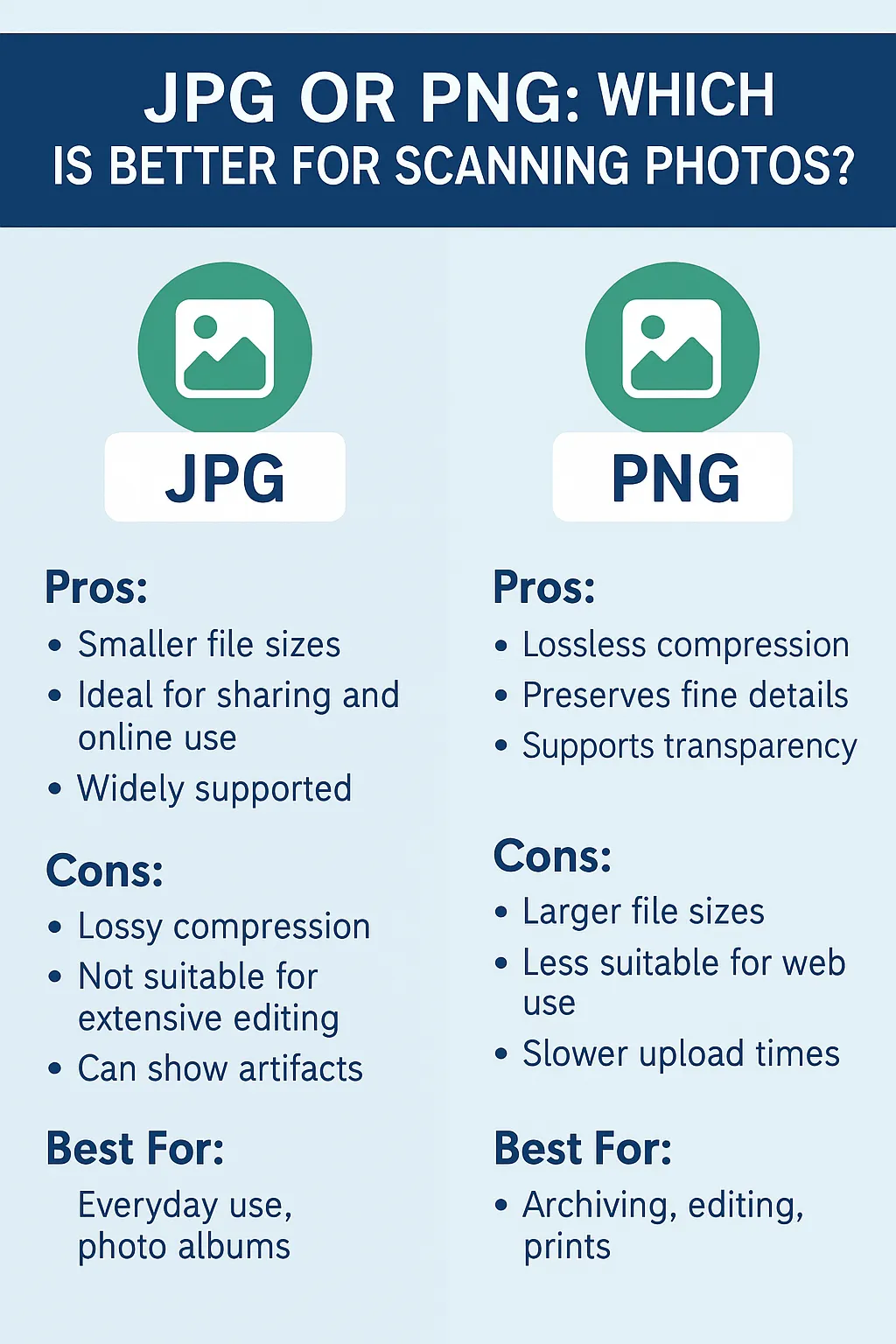
JPG or PNG: Which Is Best for Scanning Your Photos?
When digitizing old photographs, choosing the right file format can make a big difference in image quality, file size, and future use. The two most common formats for scanned photos are JPG (or JPEG) and PNG—but they serve different purposes.
At USA Imaging, Inc., we offer both formats depending on your needs. Here’s how they compare:
JPG (Joint Photographic Experts Group)
Pros:
Smaller file sizes
Ideal for sharing and online use
Supported by virtually all devices and platforms
Quick loading and storage-efficient
Cons:
Lossy compression—some image quality is reduced
Not suitable for heavy editing or archival preservation
Compression artifacts can appear over time with multiple edits/saves
Best For: Everyday use, photo slideshows, social media, and family albums where file size and ease of access are important.
PNG (Portable Network Graphics)
Pros:
Lossless compression—no quality is lost
Preserves fine details and text better
Great for photo editing or restoration work
Transparency support (for image design use)
Cons:
Larger file sizes
Not ideal for large batches if storage space is limited
Slower upload/download times for large files
Best For: Archival quality, restoration projects, enlargements, or professional use where every detail matters.
So, Which Should You Choose?
Choose JPG for convenience, standard prints, and web use.
Choose PNG if quality, editing, or preservation is the priority.
At USA Imaging, Inc., we help you choose the right format for your project—and we can even provide both formats if you want flexibility.
📞 Contact us today to discuss the best photo scanning options for your needs. Whether you're preserving memories or preparing for design work, we’ve got the format—and the quality—you need.
